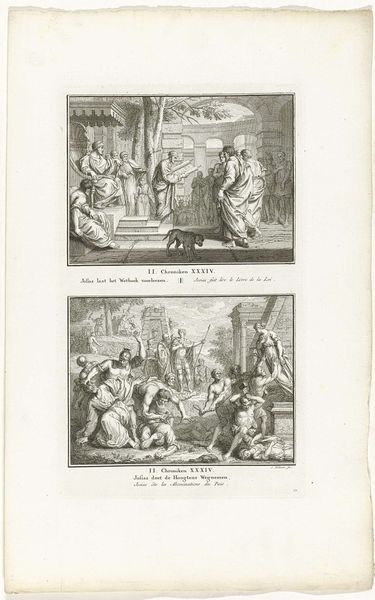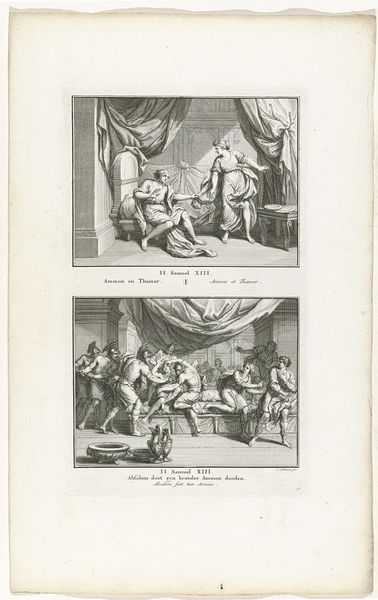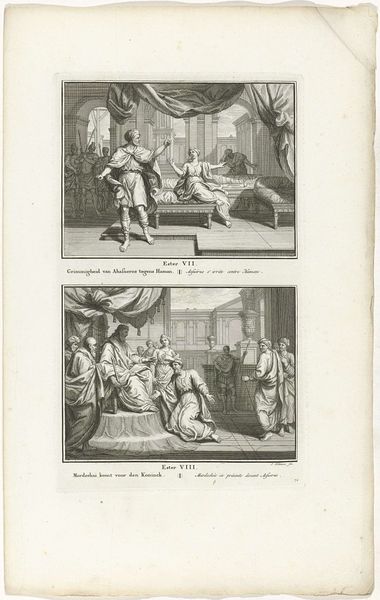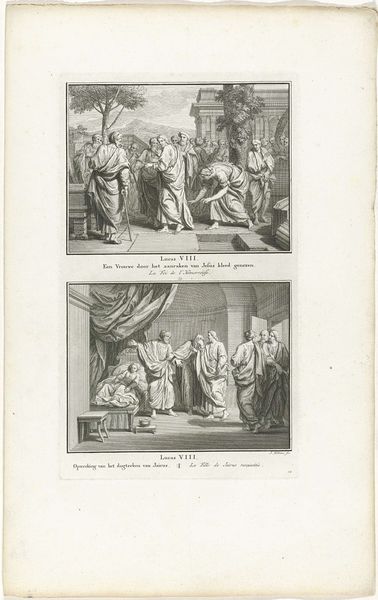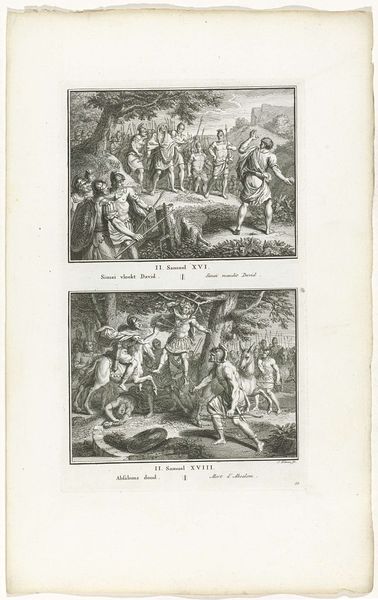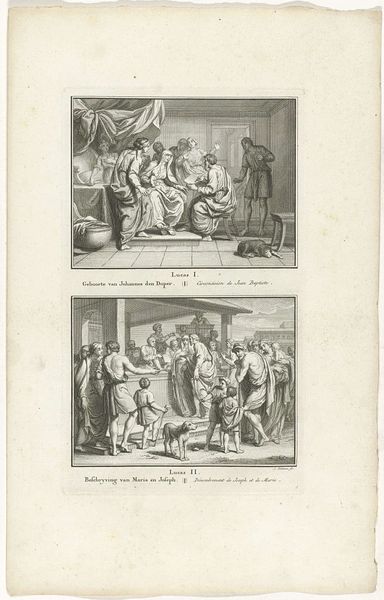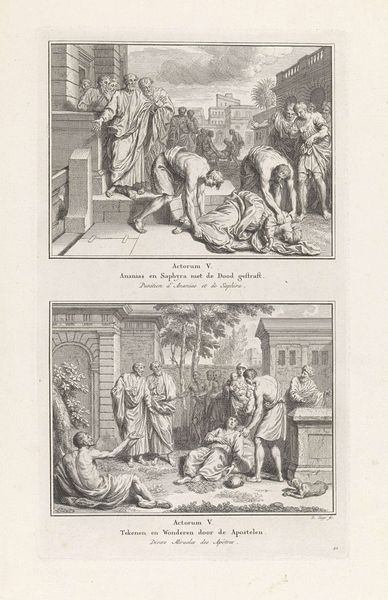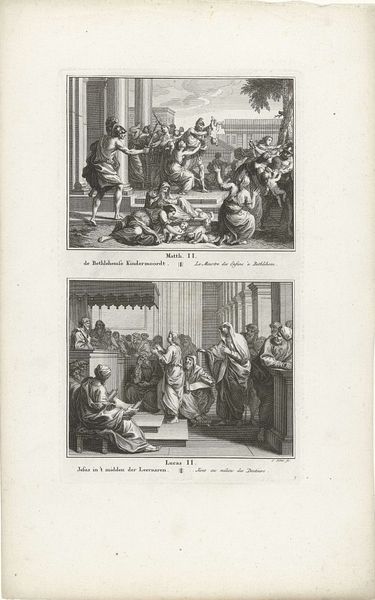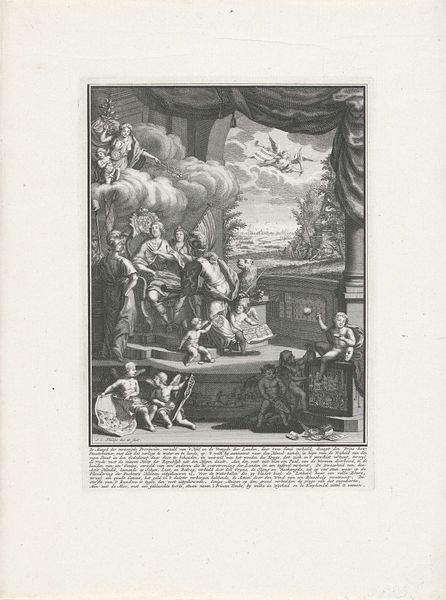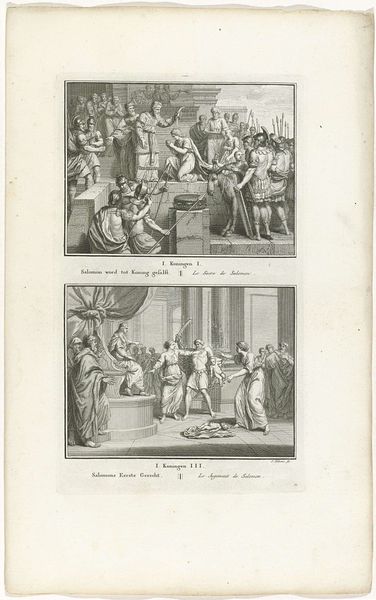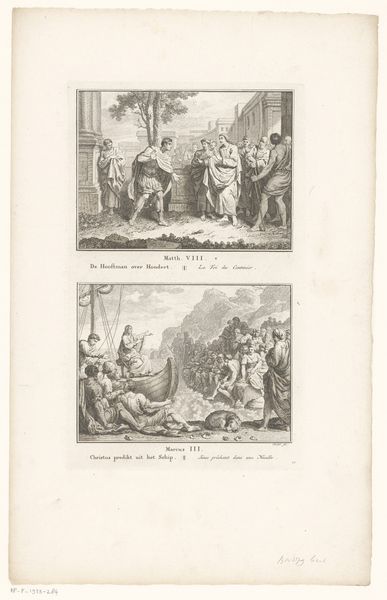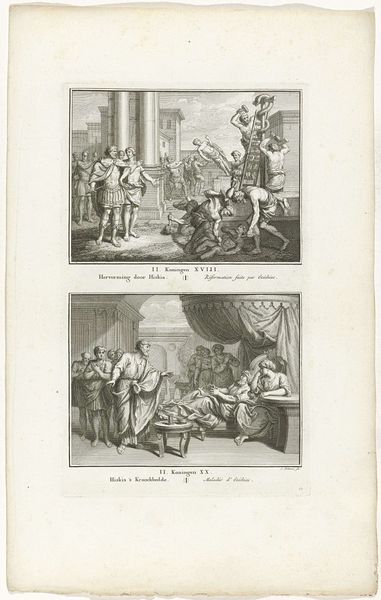
Drie jongelingen in de brandende oven en het feestmaal van Belsassar 1791
0:00
0:00
Dimensions: height 325 mm, width 194 mm
Copyright: Rijks Museum: Open Domain
Curator: This is "Drie jongelingen in de brandende oven en het feestmaal van Belsassar," an engraving by Jacob Folkema, dating to 1791. It's a fascinating piece, wouldn’t you agree? Editor: Absolutely. There's something stark and urgent about the way the narratives are stacked vertically. I’m immediately drawn to the texture – the fine lines used to create a sense of depth and drama. What’s your initial take on the social narratives being presented here? Curator: Well, the print combines two scenes from the Book of Daniel, set during periods of political turmoil in Babylon, of course. The upper register shows the three young men miraculously saved from the fiery furnace. The lower scene portrays Belshazzar's feast, disrupted by the divine writing on the wall. Notice the different reactions to power shown here! The submissive worshippers contrasted with those violently tossed into the furnace, for example. Editor: The duality of that is compelling. When looking at the act of production itself, the engraver had to make tangible choices, to take these biblical stories and convert them into reproducible images for a broad audience. Prints such as this provided narratives that would have acted as both moral instruction and political commentary. How might the printing workshop’s material constraints influenced Folkema’s choices here? Curator: Precisely. Prints made religious stories accessible and digestible. They also often supported certain power dynamics. In this instance, one can explore the work as a tool of disseminating particular messages to a broad audience and cementing social hierarchies. Who had access, who paid, who consumed the messages. That becomes interesting to investigate in the social sphere. Editor: Thinking about materiality again, how did the very nature of the engraved line—its precision, its reproducibility—lend itself to propagating certain religious and political ideals at the time? Were there other artists employing printmaking this way, to challenge traditional hierarchies? Curator: Certainly. Printmaking as a whole grew from that very challenge to entrenched norms, as the technique makes mass distribution possible and offers room for criticism through commentary and satire. Consider the context of late 18th century—revolution in France, increasing political awareness. Editor: Looking at Folkema’s composition choices with this social climate in mind enriches the entire work; thanks to the detailed print work that lets us go further to dissect how he communicated messages through accessible, consumable art. Curator: Indeed. Jacob Folkema’s work serves as a vivid example of how artistic skill intersects with prevailing socio-political forces. A valuable record!
Comments
No comments
Be the first to comment and join the conversation on the ultimate creative platform.
